TPO -> TPOs of Denmark
TPOs of Denmark
By Tony Goodbody
Postmarks of the First Period (1844-1883)
The early TPOs of Denmark date from 1844. Many of them are cryptic and need some explanation. The abbreviations to look for are P.S.B. or similar (Post Speditions Bureau, i.e. TPO); JB.PB or JB.PK (Jernbane Postbureau or Jernbane Postkontor, i.e. Railway Post Office). A more extensive list of abbreviations may be found on the Railway Philatelic Group website under "Terms and Abbreviations."
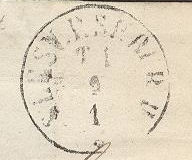 The postmark shown in figure 1 for example reads "SLESV. P.S.P. BUR. II/ T1" (Slesvigske Post Speditions Bureau II/ T1)
which was used on the branch line Ørster - Rendsburg. The initial T1 stands for TOG 1 (i.e. Train 1).
The postmark shown in figure 1 for example reads "SLESV. P.S.P. BUR. II/ T1" (Slesvigske Post Speditions Bureau II/ T1)
which was used on the branch line Ørster - Rendsburg. The initial T1 stands for TOG 1 (i.e. Train 1).
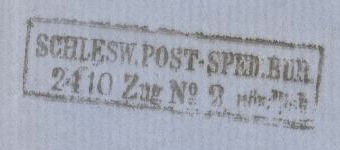 The line became part of Germany in 1864 and the TPO used the typical Prussian type of postmark (Figure 2)
with the German spellings for Schleswig and Zug.
The line became part of Germany in 1864 and the TPO used the typical Prussian type of postmark (Figure 2)
with the German spellings for Schleswig and Zug.
Meanwhile, in 1852 Danish post offices (including travelling offices) were assigned numbers which were incorporated into their cancellers. For example, the TPO on the Sjaelland Railway (Købanhavn - Korsør) used the No. 182 vertical duplex postmark with year date reading "SJAELL. POST SPED. BUREAU/ T1 (figure 3).
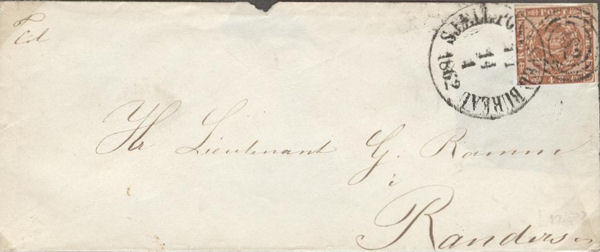
Figure 4 shows a postcard cancelled with the vertical duplex mark "Lollandske JB.PK." with the number 137 (Nykøbing F. - Nakskov).
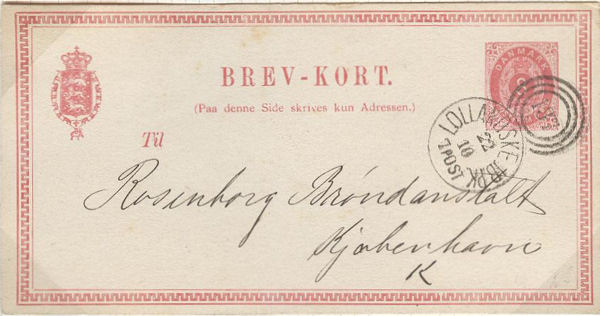
Postmarks of the Second Period (1884-1891)
During this period circular datestamps were used to cancel stamps and the numeral cancellers became obsolete, although some duplex cancellers continued to be used with their numbers removed.
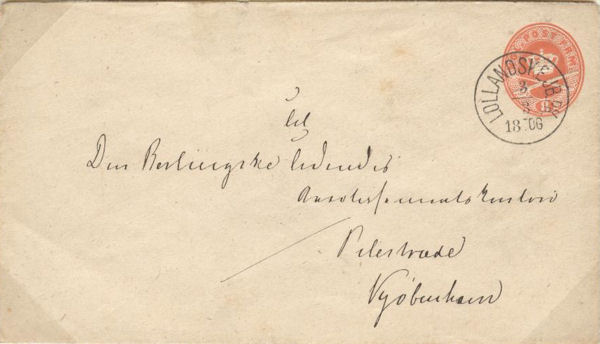
Figure 5 shows a cover with the postmark LOLLANDSKE JB.PK. - The same route as for figure 4. At the same time circular postmarks with the terminals specified began to appear (figure 6: Aalborg-Frederikshavn, train 3).
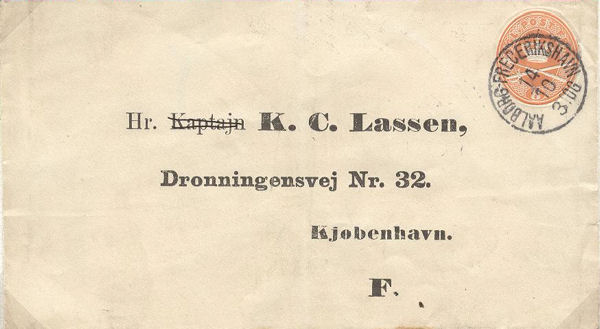
Postmarks of the Third Period (1892-1908)
In 1892 a new type of postmark began to appear namely the "Swiss Bridge" type with vertical bars (figure 7). The date and train number are in the bridge.
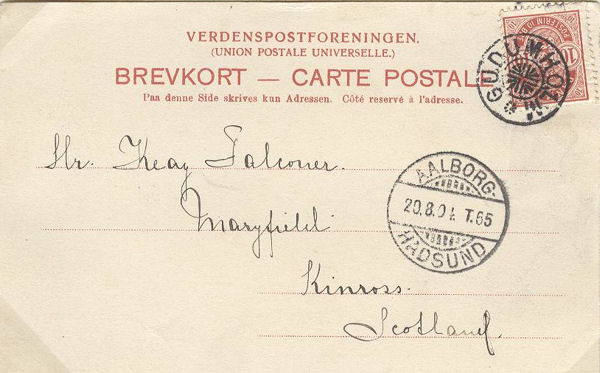
Postmarks of the Fourth Period (1910 - ?)
In 1910 a further new type of postmark was introduced, namely the Swiss Bridge without vertical bars. Figure 8 shows the postmark used on the route Abenraa-Røde Kro.
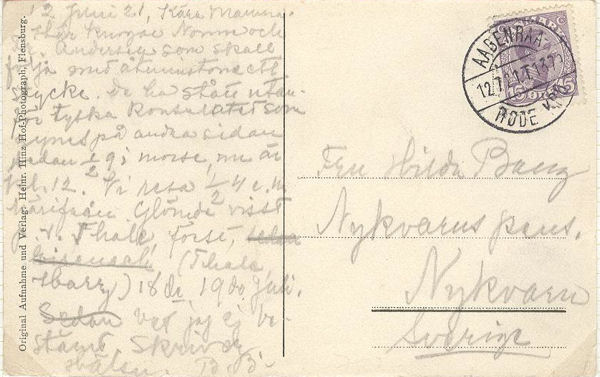

Figure 9 shows another type of postmark in use during this period. It is essentially a Swiss Bridge with the inner circle and bar removed. To the left of the datestamp is a mark reading ANBÆK / (HAMMEL). This is a "letter box clearance" mark in use at small stations.
International TPO Routes
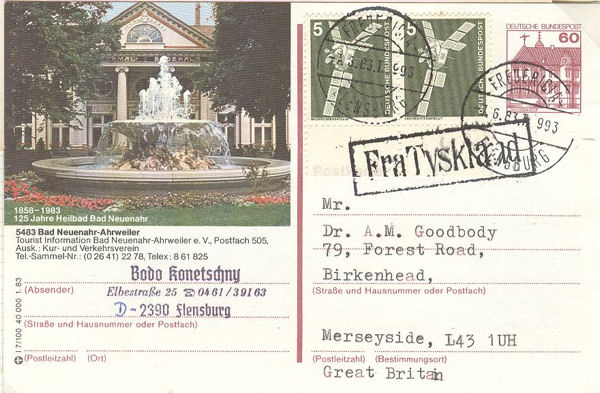
Figure 10 shows a postcard posted at Flensburg (Germany) on the international TPO FREDERICIA - FLENSBURG with the cachet "FRA TYSKLAND" (From Germany). For more information see Fra marks in our Seapost section.
Other abbreviations may be encountered, such as PTJ which means Postens Transporttjeneste. [Note the spelling]. In translation PTJ = Postal Transport Services. It is the successor of the JPK = Jernbane Post Kontor (Railway Post Office). PTJ offices coordinate the postal transport (by rail or by truck or even by boat).
Bibliography:
Goodbody, AM "The Railway Post Offices of Denmark" published by the Mobile Post Office Society (USA) 1979
Barefoot, J (Ed.) "Denmark Numeral Cancels" published by Barefoot Investments, 1983
Hovard, S "De Danske Jernbanebureaur og deres Stempler" Vol.1 (Øerne) & Vol.2 (Jylland) published by the author 1994.

